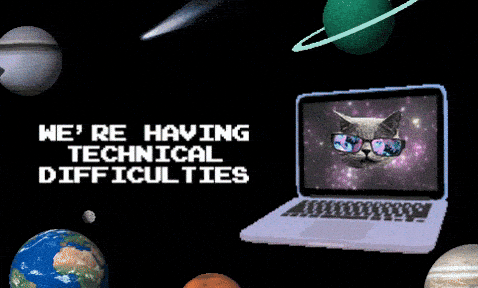- Benzinga Tech Trends
- Posts
- The Cloud Sneezed. The Internet Caught Pneumonia
The Cloud Sneezed. The Internet Caught Pneumonia

When the internet hiccups, it’s usually Amazon that sneezes. On Monday, a small internal failure inside Amazon Web Services rippled into one of the largest global outages in recent memory—reminding everyone just how dependent the modern world has become on one company’s cloud.
From Reddit to Venmo, from Uber to Fortnite, thousands of websites and apps blinked out for hours because a single AWS region in northern Virginia forgot how to route network traffic.
What started as a technical blip almost became a digital blackout.
How One AWS Region Took Down Half The Web
The disruption began inside US-EAST-1, the data center cluster that serves as the default home for much of the internet.
A malfunction in a network health-monitoring subsystem within Amazon’s EC2 service triggered DNS failures. Those breakdowns prevented apps from finding the right servers to reach critical databases like DynamoDB.
Amazon said all services were back online by late afternoon, though lingering backlogs continued for hours in systems such as AWS Config, Redshift, and Connect.
The company confirmed the problem originated in its internal network but offered few details on why the same region has failed multiple times in recent years.

Source: Giphy
From Snapchat To Banks To Government Services: The Ripple Effect
The outage hit nearly every corner of the digital world. Snapchat, Reddit, Roblox, Duolingo, Coinbase, Robinhood, and Lyft all went dark, along with Amazon’s own Prime Video and Alexa.
In the U.K., government services, banks, and telecom providers reported downtime. Downdetector logged more than 4 million user complaints worldwide.
“If a company can break the entire internet, they are too big. Period,” Senator Elizabeth Warren wrote on X, renewing calls to rein in Big Tech’s dominance.
The Fragile Backbone Of The Cloud
Amazon Web Services isn’t just another vendor—it’s the backbone of the connected economy, hosting data and applications for governments, hospitals, banks, and startups alike.
Monday’s outage, the third major AWS failure linked to the same region in five years, shows how one glitch in a massive shared infrastructure can ripple through everyday life.
When Cloud Becomes The Single Point Of Failure
The lesson is clear: convenience has a cost. The cloud may feel infinite, but it lives in real machines that can—and do—break.
Until businesses diversify beyond a handful of megaproviders, even a small AWS glitch can turn into a giant mess for mankind.
This Week In Tech
Intel Targets AI Market With ‘Crescent Island’ GPU
Intel Corp. is stepping up its presence in the AI chip race with its upcoming “Crescent Island” GPU — a new data center processor launching next year. According to Intel CTO Sachin Katti, the chip is designed to maximize “performance per dollar” and achieve “the best token economics.”
Jamie Dimon Warns Of AI Job Disruption
JPMorgan Chase & Co. CEO Jamie Dimon reiterated that AI is here to stay, saying the technology’s benefits will ultimately materialize. However, he cautioned that rapid job displacement could create serious challenges if governments and businesses aren’t adequately prepared.
Microsoft, Google, Amazon Move Production Out Of China
Microsoft Corp. plans to move most new product manufacturing out of China as soon as next year, joining Google and Amazon in diversifying production away from the world’s second-largest economy.
Anthropic Projects Significant Revenue Growth
Anthropic, the AI firm supported by Amazon.com and Alphabet Inc.’s Google, is reportedly forecasting its annualized revenue run rate to more than double—and potentially triple—next year.
Apple Confirms Continued Investment in China
During his visit to China, Apple Inc. CEO Tim Cook said the company will continue to “increase investment” in the region, even as U.S. President Donald Trump threatens new tariffs on imports.
That's all for this week! If you found these updates useful, you'll like more from this newsletter. Get deeper dives, hot takes, and all the latest tech news delivered straight to your inbox.